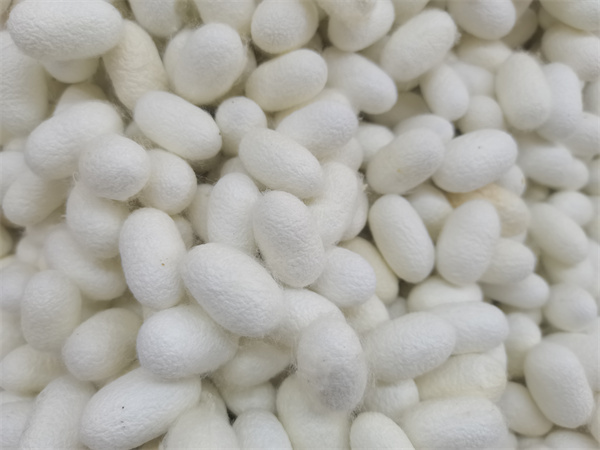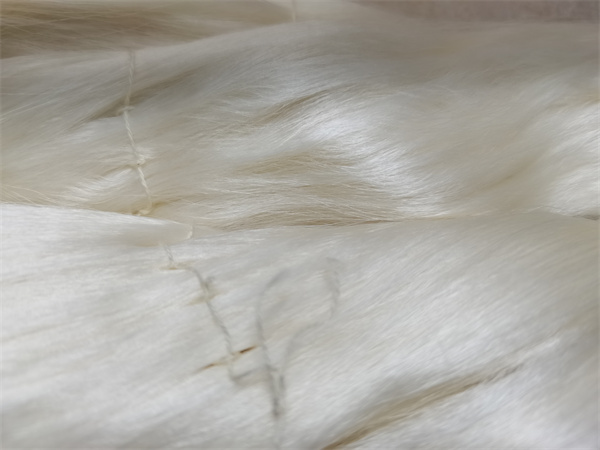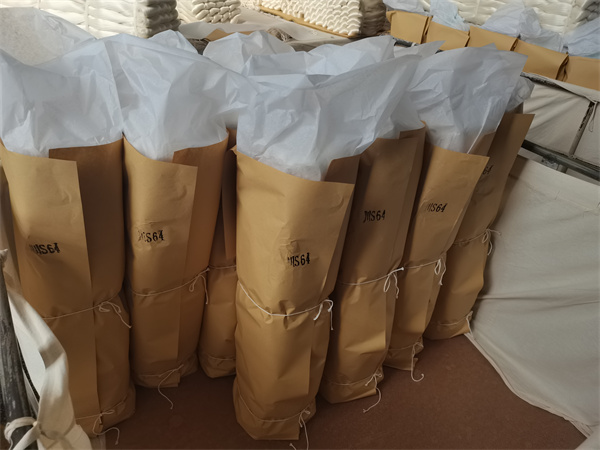宁川纺织(苏州)有限公司
Ningchuan Textile (Suzhou)Co.,Ltd
WeChat:
![]()

Call us at:(+86)136 0625 2116
中国丝绸历史与文化
china Silk History & Culture
桑蚕(Bombyx mori)的祖先是古代居住在桑树林中的野生蚕。在古代,一些古老的野生蚕被人们转移到室内饲养它们。经过人工繁育和选育,逐渐演变成具有高经济价值的家蚕;而另一部分古老的野生蚕总是栖息在野生桑树林中,存活并繁殖了很长时间,进化成今天的野生蚕。
The ancestor of mulberry silkworm (Bombyx mori) was the wild silkworm that inhabited the mulberry forest in ancient times. In ancient times, some ancient wild silkworms were moved indoors by people to raise them. After artificial breeding and selection, they gradually evolved into domestic silkworms with high economic value; while another part of ancient wild silkworms always inhabited in the wild mulberry forests, survived and reproduced for a long time, evolving into today’s wild silkworm.
丝绸业起源于中国。根据出土的文物,历史记录和文本研究,中国最早在5000年前发明了新石器时代的丝绸蚕业;在2000多年前的春秋战国时期,可以编织精美的丝绸。蚕桑和丝绸生产在很长的历史时期是中国独有的。周朝以后,中国与世界其他国家之间的交流和贸易逐渐发展起来。中国丝绸、蚕桑和养蚕技术分别在12世纪和15世纪传播到世界,向东传播到韩国和日本,向中亚和西亚国家,向埃及和地中海东海岸的国家传播到意大利。,法国和其他欧洲国家。作为生产手段,蚕卵被分散到各个地方繁殖和繁殖。受各地自然环境和人们有目的、有计划地培育和选型的影响,形成了适应各地气候环境和生产要求的特点。
The silk industry originated in China. According to unearthed cultural relics, historical records and textual research, China had invented silk sericulture in the Neolithic Age at the latest 5,000 years ago; in the Spring and Autumn and Warring States period more than 2,000 years ago, it was possible to weave exquisite silk. Sericulture and silk production were unique to China during a long historical period. After the Zhou Dynasty, the exchanges and trade between China and other countries in the world gradually developed. Chinese silk, sericulture and sericulture technology spread to the world, to Korea and Japan to the east, to countries in Central Asia and West Asia, to Egypt and the countries on the east coast of the Mediterranean, to Italy in the 12th and 15th centuries, respectively. , France and other European countries. As a means of production, silkworm eggs are scattered to various places to breed and reproduce. Affected by the natural environment of various places and people’s purposeful and planned cultivation and selection, they have formed characteristics that are adapted to the climate environment and production requirements of various places.
丝绸之路The Silk Road
丝绸之路,又称丝绸之路。它是一个古老的贸易通道,横跨亚洲并连接欧亚大陆。它已有2100多年的历史。它从长安出发,经过陕西,甘肃,宁夏,青海,甘肃,新疆,到中亚,西亚和地中海国家。丝绸之路是通往地中海东海岸(今罗马)的陆路通道,全长7000多公里,中国有4000多公里。中国是丝绸的故乡。在通过这条路线进行的贸易中,丝绸产品是中国出口最具影响力和代表性的产品,因此得名。在19世纪下半叶,德国地理学家费迪南德·冯·里希特霍芬将这条陆路运输路线称为"丝绸之路"。从那时起,它已被国内外历史学家使用。这个古老的贸易通道为东西方之间科技、文化、历史、手工业、农业的交流和发展做出了巨大贡献。
The Silk Road, also known as the Silk Road. It is an ancient trade channel that traverses Asia and connects Eurasia. It has a history of more than 2,100 years. It starts from Chang’an and passes through Shaanxi, Gansu, Ningxia, Qinghai, Gansu, Xinjiang, to Central Asia, West Asia, and the Mediterranean countries. The overland passage to the east coast of the Mediterranean (now Rome), the Silk Road is more than 7,000 kilometers in length, and more than 4,000 kilometers in China. China is the hometown of silk. In the trade carried out through this route, silk products are the most influential and representative products exported by China, hence the name. In the second half of the 19th century, German geographer Ferdinand von Richthofen referred to this land transportation route as the “Silk Road”. Since then, it has been used by historians both at home and abroad. This ancient trade channel has made great contributions to the exchange and development of science and technology, culture, history, crafts, and agriculture between the East and the West.
汉朝对匈奴战争时期,河西地区相继建立了武威、张掖、酒泉、敦煌四县。四县的建立,对西部地区交通的保护大有裨益。为了巩固其在西部地区的统治,保卫和抵抗匈奴人,并确保在西部地区的交通,汉政府从敦煌县建造了一座新的长城,与秦长城相连。每五英里和十英里就建一座灯塔,有警卫和警卫。在敦煌以西至延泽(今罗泊)的通道上,沿途设置了亭子屏障和放行站。随着汉朝战胜匈奴人,汉武帝在西部地区进一步发展了政权。到西汉末年,东西向贸易道路已经畅通近百年。
During the Han Dynasty war against the Xiongnu, four counties of Wuwei, Zhangye, Jiuquan and Dunhuang were successively established in the Hexi region. The establishment of the four counties is of great benefit to the protection of traffic leading to the Western Regions. In order to consolidate its rule in the Western Regions, defend and resist the Huns, and ensure transportation in the Western Regions, the Han government built a new Great Wall from Dunhuang County to connect with the Qin Great Wall. There are beacon towers built every five and ten miles, with guards and guards. On the passage from the west of Dunhuang to Yanze (now Lop Nur), pavilion barriers and release stations were set up along the way. With the victory of the Han Dynasty against the Huns, Emperor Wu of the Han Dynasty further developed political power in the Western Regions. By the end of the Western Han Dynasty, the east-west trade roads had been unblocked for nearly a hundred years.
近几十年来,在从东部的长安到西部的地中海东海岸的广阔地区发现了大量的中国古代丝绸织物和瓷器。历史上的一些著名人物,如驻西使节张骞、军队作家班超、从"西天"学习的唐玄奘等,他们的一些故事都与丝绸之路有关。
In recent decades, a large number of ancient Chinese silk fabrics and porcelain have been discovered in the vast area from Chang’an in the east to the east coast of the Mediterranean Sea in the west. Some famous figures in history, such as Zhang Qian who was an envoy to the Western Regions, Ban Chao who was a writer in the army, and Tang Xuanzang who learned from the “Western Heaven”, some of their stories are related to the Silk Road.
陆上丝绸之路Land Silk Road
丝绸之路俗称丝绸之路,是指西汉时期张骞开通的从东长安到西罗马的大陆通道。这个大陆通道从北到南有两个分支。向西到达大越石(今新疆和阿富汗东北部),安西(今伊朗),天智(今阿拉伯半岛),最后到达罗马帝国。北线从敦煌向西,从玉门关出发,沿天山南麓穿过康格林,经过大湾和康居(均在苏联中亚),然后向西南方向行驶,与南路汇合。这两条路线统称为"陆上丝绸之路"。".
The Silk Road commonly referred to as the Silk Road refers to the mainland passage opened by Zhang Qian in the Western Han Dynasty from Chang’an in the east to Rome in the west. This continental passage has two branches from the north to the south. Congling, west reaches Dayueshi (now Xinjiang and northeastern Afghanistan), Anxi (now Iran), Tiaozhi (now Arabian Peninsula), and finally reaches the Roman Empire. The north route goes westward from Dunhuang out of Yumenguan, passes through Congling along the southern foot of the Tianshan Mountains, passes through Dawan and Kangju (both in the Soviet Union Central Asia), and then goes southwest and merges with the South Road. These two routes are collectively known as the “Land Silk Road”.
海上丝绸之路Maritime Silk Road
"海上丝绸之路"始于秦汉时期,兴盛时期为唐宋时期,并在明朝初期达到顶峰。它是一条从泉州,广州,扬州等地到朝鲜,日本,东南亚国家,南亚国家,阿拉伯和东非沿海国家的海上贸易路线。"海上丝绸之路"将中国与世界主要古代文明和文化发源地连接起来,并促进这些地区的经济和文化交流。在古丝绸之路上,依然可以看到荒船的骆驼队和吐鲁番的浓郁美景。,敦煌的莫高窟和沙漠绿洲的新月泉,以及青海湖周围各民族的壮丽风光和文化。古丝绸之路上有许多历史遗迹和古迹,尤其是敦煌莫高窟壁画,反映了当时人们的生活和对艺术的向往。
The “Maritime Silk Road” began in the Qin and Han Dynasties, prospered in the Tang and Song Dynasties, and reached its peak in the early Ming Dynasty. It is a maritime trade route from Quanzhou, Guangzhou, Yangzhou, etc., to North Korea, Japan, Southeast Asian countries, South Asian countries, Arab and East African coastal countries. The “Maritime Silk Road” connects China with the world’s major ancient civilizations and cultural birthplaces, and promotes economic and cultural exchanges in these areas. On the ancient Silk Road, you can still see the camel team of the desert boat and the rich beauty of Turpan. , Mogao Grottoes in Dunhuang and Crescent Spring in the desert oasis, as well as the magnificent scenery and cultures of various ethnic groups around Qinghai Lake. There are many historical relics and monuments on the ancient Silk Road, especially the murals of Mogao Grottoes in Dunhuang, which reflect people’s life and yearning for art at that time.
丝绸起源于中国,是人类已知的最古老的纤维之一。丝绸的历史既迷人又辉煌。这些文章涵盖了丝绸历史的各种事实。
Silk, originated in China, is one of the oldest fibers known to man . The history of silk is both enchanting and illustrious. These articles cover the various facts of silk history.
如今,中国蚕丝是世界上最高等级的蚕丝,6A+的蚕丝已经作为医用手术线等。
Today, Chinese silk is the highest grade silk in the world, and 6A + silk has been used as a medical surgical line.


